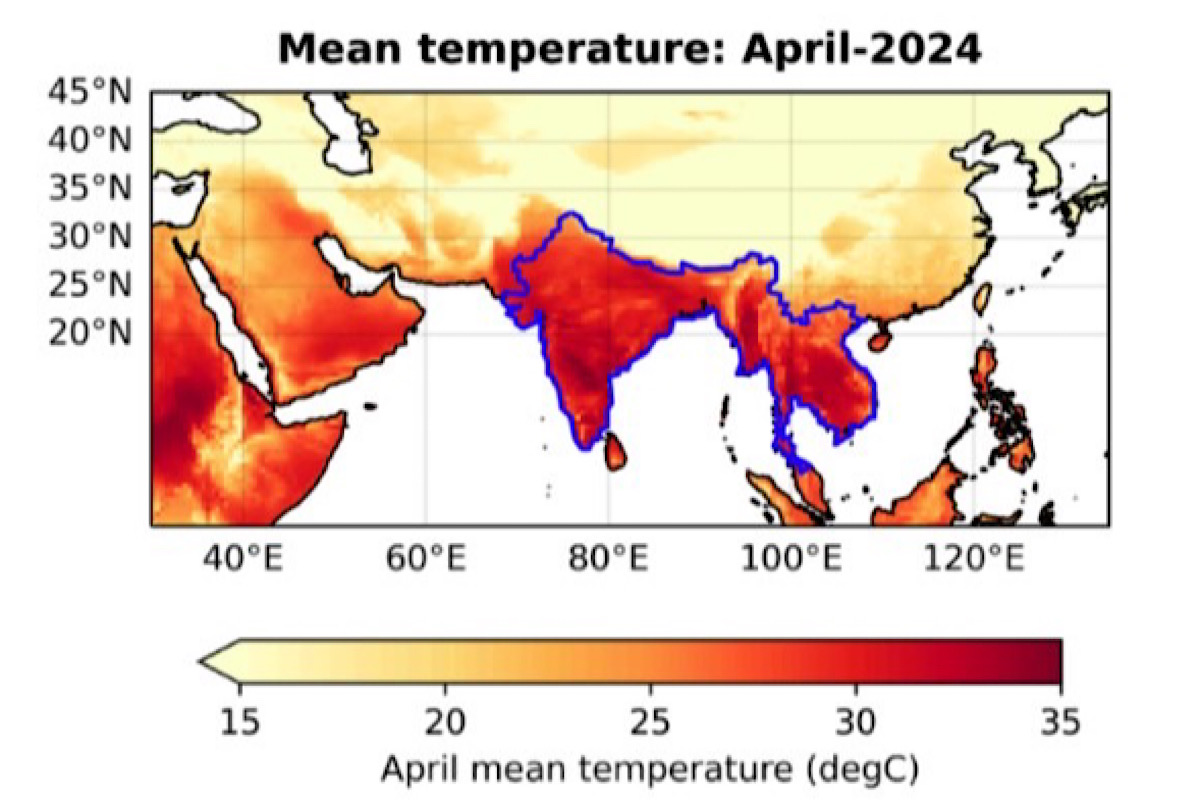Extreme temperatures above 40 degrees Celsius impacted billions of people across Asia in April. As the heatwave intensified, attributable to climatic adversities, life became much tougher for people living in poverty across Asia and the 1.7 million displaced Palestinians in Gaza.
Asia was hit by a prolonged heatwave this April. In South and Southeast Asia, Myanmar, Laos, and Vietnam broke records for recording the hottest April day, while the Philippines experienced its hottest night ever. In India, temperatures reached as high as 46 degrees Celsius. The heat was also extreme in West Asia, with Palestine and Israel experiencing temperatures above 40 degrees Celsius. The month was the hottest April on record globally.
Advertisement
Heat-related deaths were reported globally, with at least 28 in Bangladesh, five in India and three in Gaza during April, while surges in heat deaths have also been reported in Thailand and the Philippines this year. These are only preliminary figures, and because heat-related deaths are notoriously underreported, it is likely there were hundreds or possibly thousands of other heat-related deaths in Asia during April. The heat also led to crop failure, loss of livestock, water shortages, mass fish deaths, and widespread school closures. Climate change, caused by the rapid utilisation of fossil fuels and other human activities like deforestation, is making heatwave more frequent, longer and hotter around the world. Carolina Pereira Marghidan, Climate Risk Consultant at the Red Cross Red Crescent Climate Centre and PhD researcher at the Royal Netherlands Meteorological Institute, said, “The threat of extreme heat is rapidly increasing across Asia. More than four billion people live on the continent, with heat impacting the most vulnerable groups disproportionately.”
In West Asia, scientists found that April heatwave with temperatures above 40 degrees Celsius are more frequent due to warming caused by human activities. In today’s climate, with 1.2 degrees Celsius of warming, similar heatwave are expected to occur about once every 10 years. Climate change made the heat about five times more likely and 1.7 degrees Celsius hotter. In the future, extreme temperatures in West Asia could become even more frequent and intense. If warming reaches two degrees Celsius, as they are expected to in the 2040s or 2050s unless emissions are rapidly halted, a similar heatwave will occur about once every five years and will become another one degrees Celsius hotter.
In the Philippines, similar heatwave are expected to occur about once every 10 years during El Niño conditions and about once every 20 years without the influence of El Niño. According to scientists, without human-induced climate change, such an event would have been virtually impossible, even under El Niño conditions. Overall, climate change made this year’s heatwave one degrees Celsius hotter, while El Niño made the heatwave a further 0.2 degrees Celsius hotter. If global warming reaches two degrees Celsius, a similar heatwave in the Philippines will occur every two to three years and will become another 0.7 degrees Celsius hotter.
Finally, in South Asia, a similar 30-day heatwave can be expected to occur about once every 30 years. However, they have already become about 45 times more likely and 0.85 degrees Celsius hotter due to climate change, according to historical weather data. The analysis of historical weather data also found that similar heatwave are twice as likely to occur during El Niño conditions.
Extreme heatwave is making life much tougher for people in Asia living in poverty and dealing with the effects of war. In Gaza, many of the 1.7 million displaced people are living in improvised tents that trap heat, have limited access to healthcare and clean drinking water, and lack options to stay cool. Across South and Southeast Asia, the hundreds of millions of people who live in informal housing and work outdoors, like farmers, construction workers and street vendors, are disproportionately affected by extreme heat. Mariam Zachariah, Researcher at the Grantham Institute – Climate Change and the Environment, Imperial College London, said: “Climate change is bringing more days with potentially deadly temperatures to Asia every year. This result is unsurprising but important for highlighting the dangers of extreme heat in Asia. Unless the world takes massive, unprecedented steps to reduce emissions and keep warming to 1.5 degrees Celsius, extreme heat will lead to even greater suffering in Asia.”
While high temperatures are the norm across Asia during April, the increasing risk of dangerous heat, particularly in rapidly growing cities such as Manila, highlights the critical need for heat planning that protects vulnerable groups. Countries across Asia, such as India, have made substantial progress in developing heat action plans. However, across the continent, there are still significant gaps in planning for dangerous heat.









